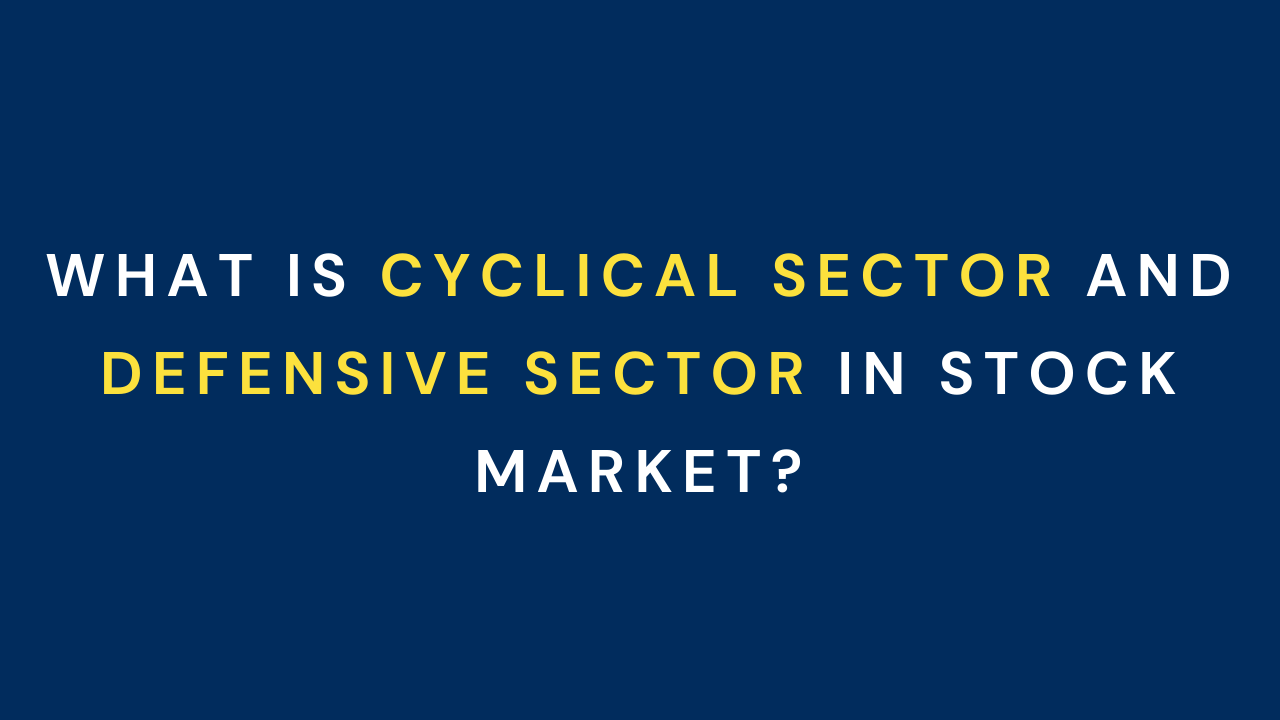Latest news & updates from us

Have you ever noticed that as the economy fluctuates, some stocks react extremely, while a few others remain unaffected! Called as Cyclical Sector and Defensive Sector, knowledge about these stocks can help you plan your investment portfolio. Let us understand them in detail.
What is a business cycle?
Have you ever sat on a roller-coaster ride? You feel good while going up. As it comes down with faster speed, you experience panic and fear. The occurrence of ups and downs in an economy over a period of time is called as business cycle. This cycle causes similar reactions like the roller-coaster. As the economy grows, the employment level, production, sales, income grow as well. The opposite is true during an economy’s decline.
Decoding cyclical stocks
Stocks that are affected by a business cycle are termed as cyclical stocks. Thus, as the economy grows, their price increases. And as the economy slows down, their price falls.
Let us take an example of automobile companies. If the economy is booming, you have good savings. You would consider changing or buying car. So, the demand for cars will go up. The sales will increase. The profits will rise. The stock prices will also move up. On the other hand, during an economic slowdown, when your job security is low and you are not earning enough, buying a car is a luxury. So, the stock prices of automobile companies will fall. Such stocks are called cyclical stocks.
Investing in cyclical sectors is risky due to the significant ups and downs. Although they carry the risk of loss, you can earn hefty profits when their prices go up. The trick lies in timing the market smartly.
Decoding defensive stocks
Exact opposite of cyclical stocks are defensive stocks, also termed as non-cyclical stocks. They remain unaffected by a business cycle. It means, whether an economy expands or contracts, their prices remain the same.
For example – Salt. Would your salt consumption with economic gyrations? No. You can also take an example of all daily necessities like toothpaste, soaps, sugar, snacks, oil, etc. The demand for these items remains constant, irrespective of the economy. Hence, these companies remain unaffected.
Investing in defensive sector defends you from loss. Suitable for risk-averse investors, you may not earn high profits, but at least you are safe.
Cyclical Sector and Defensive Sector
The basic difference in both the sectors lies in necessity and luxury.
Current scenario
Investors are more inclined towards cyclical sector due to uncertainty surrounding defensive sector. Donald Trump’s anti-immigration policies are largely impacting the IT sector. Pharma sector is affected by the regulatory challenges. And FMCG brands are still recovering from the demonetization effect.
Post demonetisation, liquidity has increased in the Indian economy, thereby calling for interest rate cuts. Cheaper loans have had a positive impact on banking, automobile and real estate sectors. It has indirectly had a positive impact on cement and metal sectors. The overall economy of India is in the growth phase. Thus, cyclical sectors are likely to perform better.
The last word
Cyclical and defensive sectors are opposite. Hence, they are good for diversification. Add stocks of both these sectors to your kitty through www.sasonline.in. Remember to strike the right balance between risk and returns.
Unlock Stocko's Video Vault: Podcasts, Analysis & Tips Inside!
11 October 2024
Stocko New Features Alert! Coming soon!
26 September 2024
SAS Online is Now Stocko !
21 September 2024

Simply fill the details, connect your bank account & upload your documents.
Open An AccountYou will be redirected in a few seconds.
Post a comment